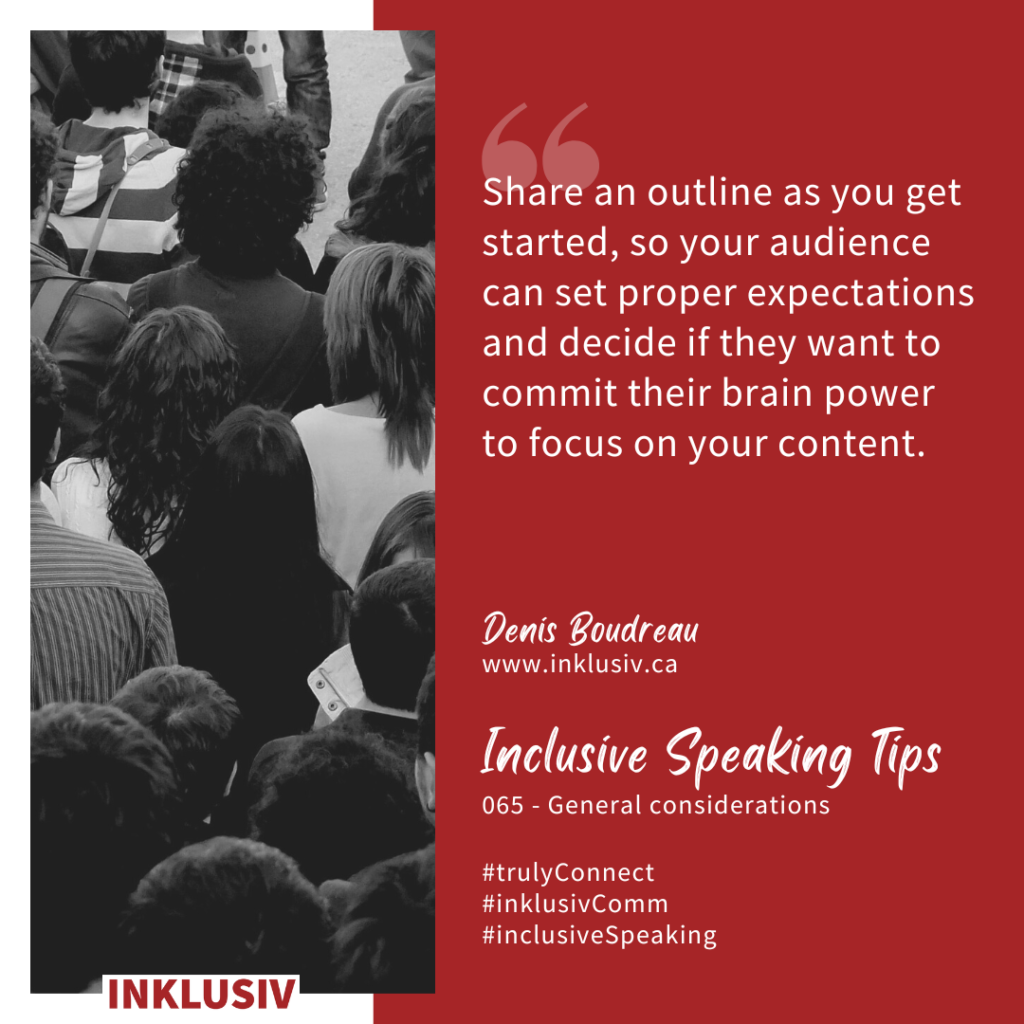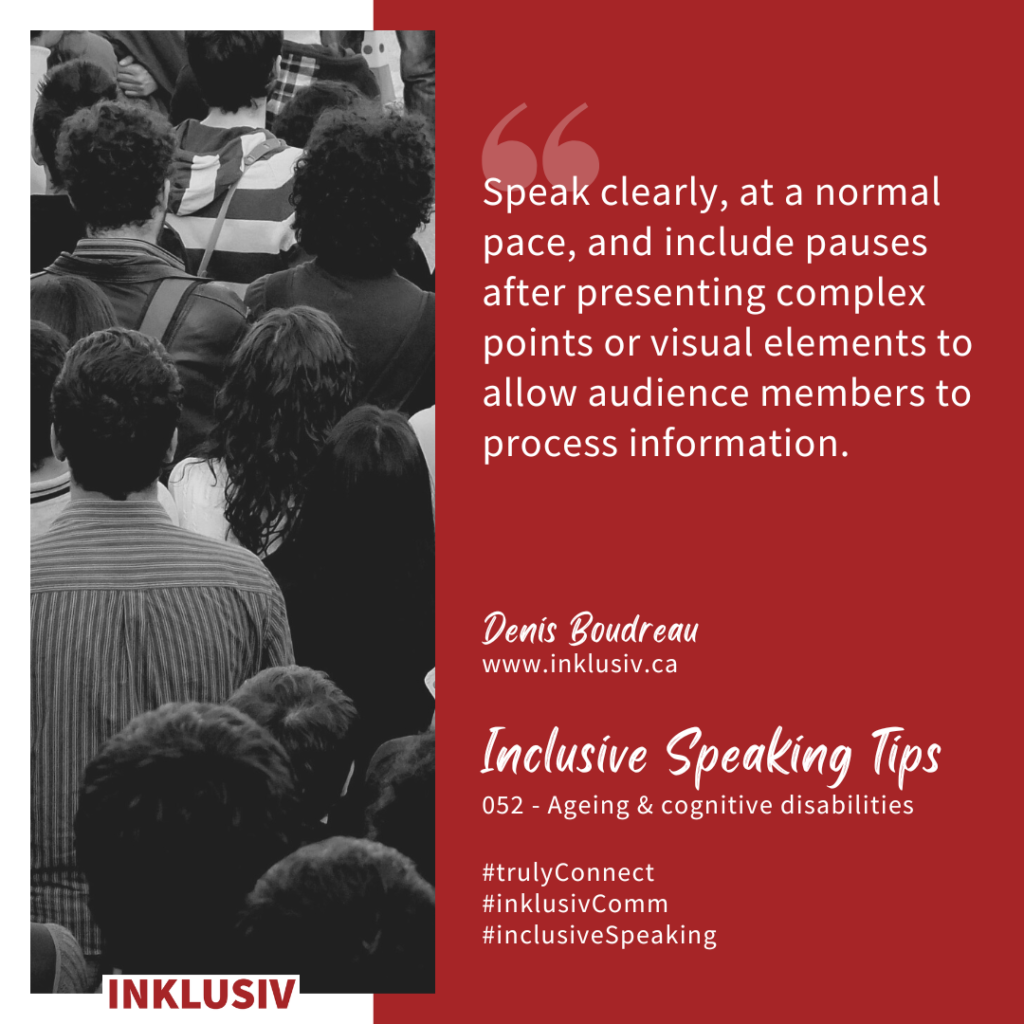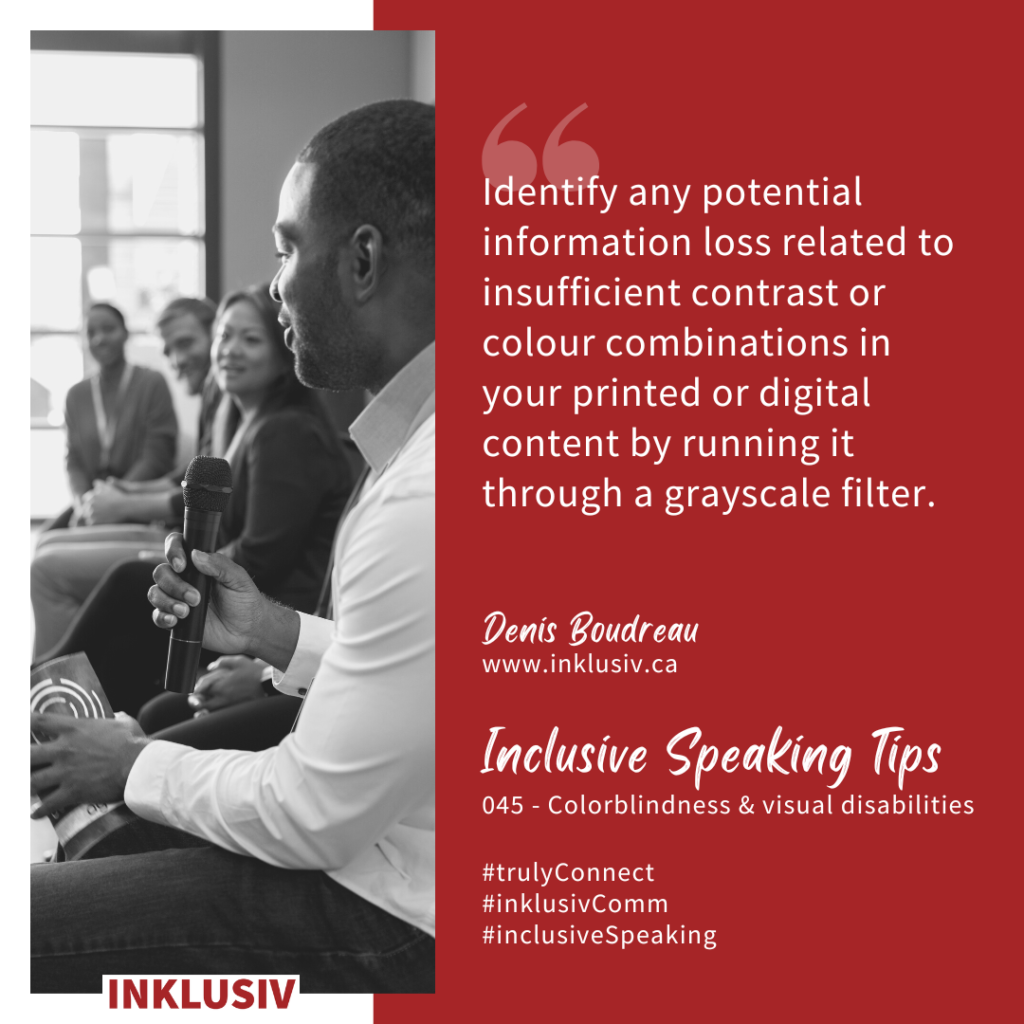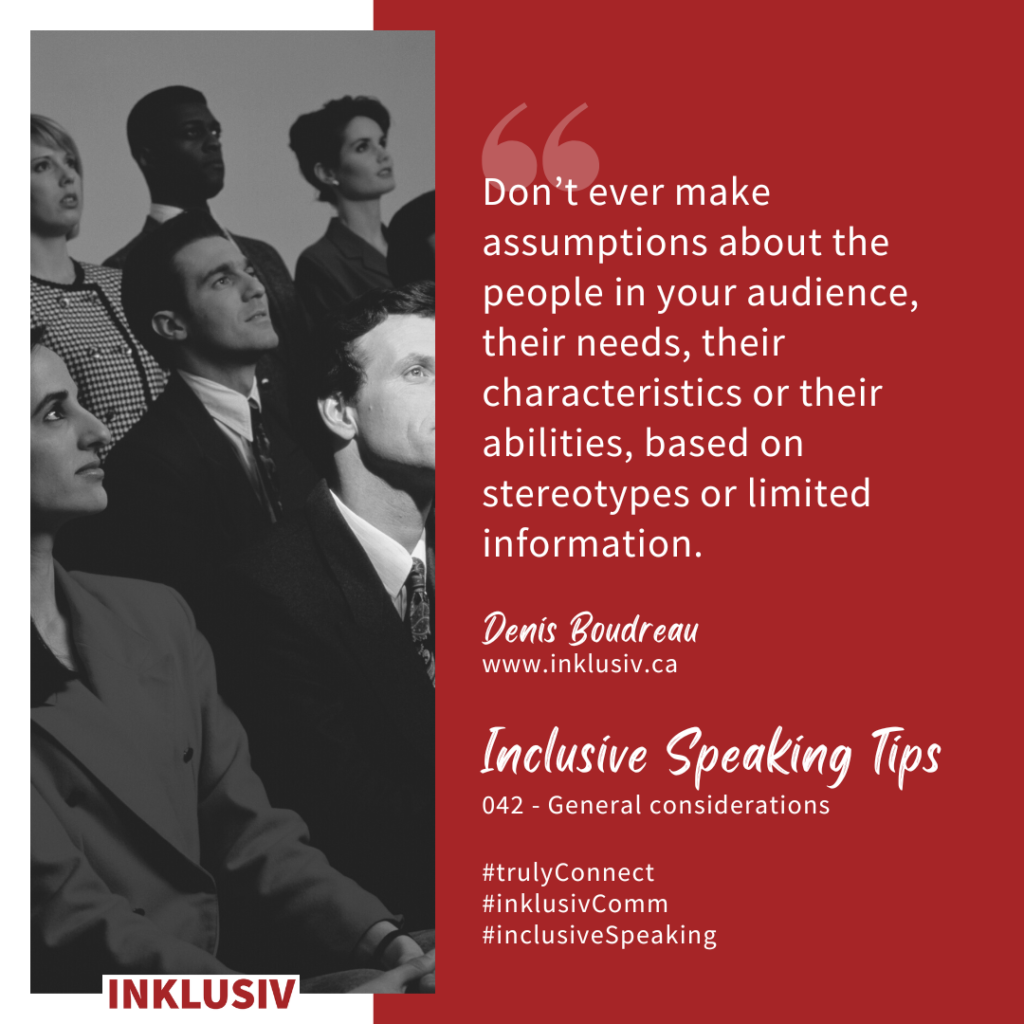Category Inclusive Speaking Tips
Shared on Instagram and archived here, this section shares a series of tips and tricks to become a more inclusive communication professional from your platform of choice (virtual or in-person events).


“Offer options to audience members by providing them with textual versions of presentations either in slide notes or in a handout accompanying slide decks.”
More details about Inclusive Speaking Tip #067

“At the start of the presentation or event, take a moment to verbally describe the room layout and location of emergency exits, food/beverages, and restrooms.”
More details about Inclusive Speaking Tip #066

“Share an outline as you get started, so your audience can set proper expectations and decide if they want to commit their brain power to focus on your content.”
More details about Inclusive Speaking Tip #065

“Never depend on colour as the only means to convey information in your printed or digital content, as some audience members can’t perceive colours the way others do.”
More details about Inclusive Speaking Tip #064

“Recognize that audience members with reading difficulties may not have enough time to finish reading text-heavy slides before you move on to the next one.”
More details about Inclusive Speaking Tip #063

“Use people-first language in your material and delivery, such as ‘people with disabilities’ instead of ‘disabled people’, as people are more than just their disabilities.”
More details about Inclusive Speaking Tip #062

“Avoid displaying content at the bottom of your slide or screen, as that area is more likely to be harder to see for audience members sitting towards the back of the room.”
More details about Inclusive Speaking Tip #061

“Go out of your way to set clear expectations for your audience, be consistent in your instructions, and always follow through with what has been announced or promised.”
More details about Inclusive Speaking Tip #060

“Make it a point to offer your audience members permission to physically move, walk around the room or even walk away from the group if they feel compelled to do so.”
More details about Inclusive Speaking Tip #059

“Don’t rely exclusively on auditory content such as audio cues or music to signal information, as those can be unusable for someone who can’t easily perceive sounds.”
More details about Inclusive Speaking Tip #058

“Make sure that the statistics, demographic data or trends presented to your audience members are diverse-conscious, when possible and appropriate.”
More details about Inclusive Speaking Tip #057

“Keep the use of slide transitions to an absolute minimum, as some audience members can easily find them distracting, disturbing, and may even become ill from them.”
More details about Inclusive Speaking Tip #056

“Go beyond colours to also employ patterns, shapes, text, positioning, hierarchy, and animation to create dynamic content that will work better for all of your audience.”
More details about Inclusive Speaking Tip #055

“Resist the urge to design massive, eye-straining blocks of content, as those can feel both off-putting and daunting for some of your audience members.”
More details about Inclusive Speaking Tip #054

“Educate yourself on disabilities and etiquette, to ensure that your material and the delivery of your material are not offensive to some of your audience members.”
More details about Inclusive Speaking Tip #053

“Speak clearly, at a normal pace, and include pauses after presenting complex points or visual elements to allow audience members to process information.”
More details about Inclusive Speaking Tip #052

“When asking if anyone has questions, be patient and keep in mind that some people with cognitive disabilities might need extra time to form their thoughts into words.”
More details about Inclusive Speaking Tip #051

“Don’t bottom-align slide text unless you know that the bottom of the screen will be located well above the audience, or the audience seating will be tiered.”
More details about Inclusive Speaking Tip #050

“Help audience members adequately prepare for planned transitions, by providing ample advance notice and reminders about what is expected to come next.”
More details about Inclusive Speaking Tip #049

“Keep in mind that hand held microphones, facial hair and other mouth obstructors can add significant challenges to the experience of lip reading audience members.”
More details about Inclusive Speaking Tip #048

“Keep switching back and forth repeatedly between screens to a minimum, as it can create cognitive overload for some attendees, and even make some of them feel ill.”
More details about Inclusive Speaking Tip #047

“Consider offering a digital copy of your materials in PPT or PDF, so audience members can follow along on their devices while leveraging their own accessibility settings.”
More details about Inclusive Speaking Tip #046

“Identify any potential information loss related to insufficient contrast or colour combinations in your printed or digital content by running it through a grayscale filter.”
More details about Inclusive Speaking Tip #045

“Recognize that any approach to diversity, equity and inclusion that fails to factor in disability and ageing will be inherently flawed and will lead to exclusion.”
More details about Inclusive Speaking Tip #044

“Optimize readability and reduce overall cognitive load for your audience members by sticking to lower case, sentence case, or camel case text presentations.”
More details about Inclusive Speaking Tip #043

“Don’t ever make assumptions about the people in your audience, their needs, their characteristics or their abilities, based on stereotypes or limited information.”
More details about Inclusive Speaking Tip #042

“Always provide audience members with elegant ways to opt-out of engagement activities involving movement when they can’t physically take part in the request.”
More details about Inclusive Speaking Tip #041

“Before asking audience members to take any sort of action, make sure sufficient instructions have been clearly provided and everyone truly understands the expectations.”
More details about Inclusive Speaking Tip #040

“Provide audience members with opportunities to re-energize as needed, by introducing opportunities for physical interactions that will get their blood flowing.”
More details about Inclusive Speaking Tip #039

“Make sure to include images, graphics and visual aids that display reflection of culturally and ethnically diverse groups and the communities in which they live.”
More details about Inclusive Speaking Tip #038